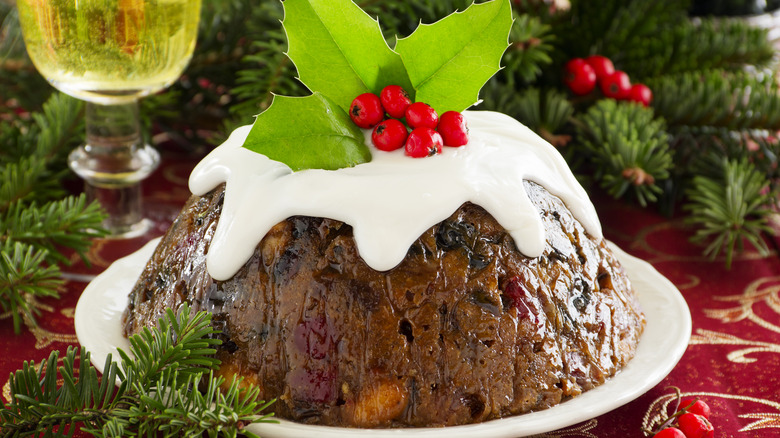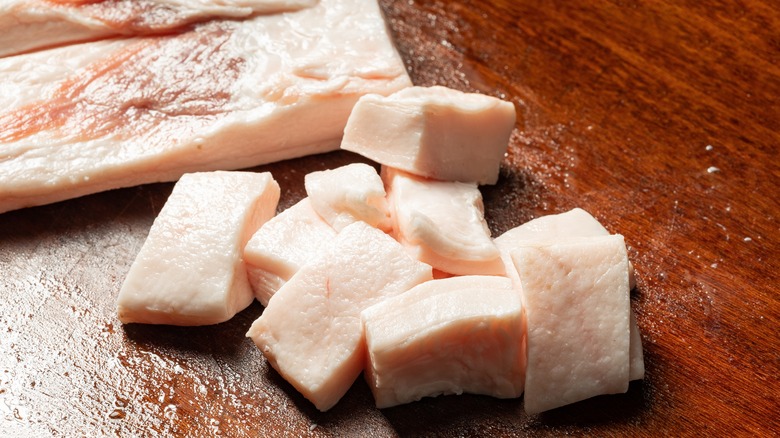Why Does Figgy Pudding Take So Long To Make?
Christmas dinners around the world can look very different depending on where you're celebrating. Although American and English holiday feasts both share several similar dishes, there are a few distinctions, some of which have been around for centuries. Figgy pudding, also referred to as Christmas pudding or plum pudding, is a steamed, dome-shaped cake that's been a Christmas staple in Britain since medieval times. It's undergone some major recipe changes throughout its long history, but the process of making figgy pudding at home is still a major time sink. It can take eight hours, and if you think that's too much of a wait, authenticity dictates that you should store it for a matter of weeks to get the best-tasting results.
Figgy pudding is boiled, steamed, or baked. It's full of dried fruits like raisins and currants, as well as a mixture of spices, citrus zest, and a generous splash of brandy. In Christmases past, it was traditionally prepared five weeks before the holiday came around so that it could be aged in a cool, dark place. Doing so lets the alcohol soak fully into the cake, leaving families with an incredibly moist, rich dessert to gift their taste buds on Christmas day. You can, of course, follow through with this time-intensive method if you've got the right environment (and loads of patience) for the job, but it's not necessary in modern recipes. However, figgy pudding still needs to steam for multiple hours.
Suet is responsible for the long cooking time
There are some common false assumptions about figgy pudding out there, one of them being that it's just another fruitcake, thus making it a good vegetarian option at Christmas dinner. While there is no (longer) meat featured in standard figgy pudding recipes, it does contain a specific shredded animal fat called suet. It comes specifically from the fat surrounding an animal's kidneys (except in the case of beef suet, which can come from any part) and can be easily found in the U.K. at butcher shops and grocery stores, but it can be hard to come by in the U.S.
Suet is commonly used in authentic versions of this festive dessert instead of butter but can be substituted with lard or vegetable shortening. You can also boil and remove the fat from a beef cut you plan on cooking up. Fat takes much longer to melt compared to butter, so a long steaming time of four to eight hours in a water bath is recommended for the flavors to soak into the cake fully. The darker the figgy pudding, the better, since the goal is to caramelize the sugars. Regardless of whether it takes weeks or hours, this is one Christmas dessert you should try at least once in your life for experience's sake.

